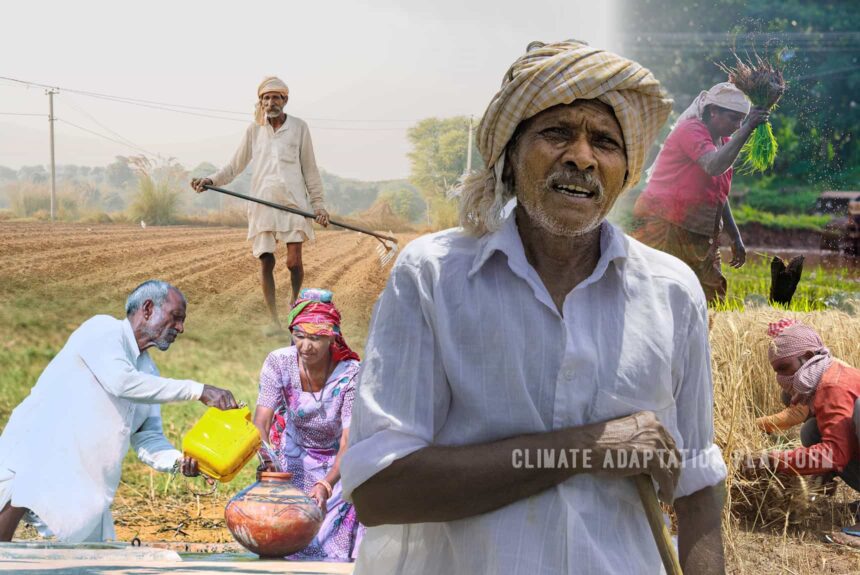India is one of the world’s most climate-vulnerable countries.
The Guardian reports that in 2022, two-thirds of the country suffered months of unprecedented heatwaves that almost decimated the country’s crops. Also, extreme weather events hit the country on 80% of days that year.
Yet the country is still expanding its investment in coal production by up to 1 billion tonnes per year. India’s Finance minister, Nirmala Sitharaman, announced the auction of 141 new coal mine sites to the highest bidder three days before its environment minister attended the COP27 in Egypt in 2022.
The government’s largest auction was in 2020 when it started to privatise its coal industry. Of the 968 coal sites it auctioned, two-thirds are located on untouched land, and many of them are in the country’s most ecologically rich and fragile forest, populated by tribal communities, the article says.
The article notes that Western countries pressure India to scale down its production and reliance on coal and gas. However, India responded that it is unfair to single them out among other developing countries that also use coal as their primary energy source, adding that most developed countries still need to be sanctioned in their natural gas production and use.
Hence lies the country’s problem. While the country grapples with climate change impacts, it also continues to invest in coal.
At COP26 in Glasgow, the world was surprised by Prime Minister Narendra’s announcement that India will commit to a Net Zero by 2070. As the world’s 4th top carbon dioxide emitter, India’s pledge was one of the highlights of the climate conference. WEF reports that a year after, the country updated Nationally Determined Contribution (NDC) – climate action targets – to the UN climate change body.
But as the country is hit by a series of extreme events made worse by climate change, it is taking a toll on its growing population, and the country must adapt and build long-term resilience to mitigate its impacts.
WEF presents five climate adaptation stories from India’s southern region of Kerala to its northern region Rajasthan. These stories are inspiring examples of how locals turned devastation from extreme events into solutions and opportunities to fight back.
In Kerala, the aftermath of the devastating flood led the area to climate-proof its critical infrastructure, such as replacing its 60-year-old bridge that floodwaters have submerged. They have also installed a concrete wall and tetrapods to reduce the impacts of the gushing water. In addition, the flooding event has highlighted the need to develop a climate-proof infrastructure index for India to map out strategies to protect its critical infrastructure.
In Maharashtra, farmers applied the watershed management approach to farming, replenishing their groundwater, lakes, and wells. Farmers used drip irrigation and diffusers on their crops to combat droughts and shifted to natural farming methods. This allowed them to grow various cops.
In Rajasthan, rain rarely comes – about two to four times a year but when it does, a deluge occurs, and gushing waters would erode the soil and destroy their crops. So residents devised a solution to store and capture these floodwaters to grow their crops. They built check dams, ponds, and rainwater harvesting tanks, which turned out to be a game-changer for the locals allowing them to harvest their crops twice a year.
In Odisha, the monsoons their farms depend on have been erratic, which is made worse by the dry summer months. These climatic changes have caused farmers to shift back to traditional crops instead of hybrid varieties, which have become risky to grow under the changing climate conditions.
Lastly, in Mumbai, communities residing in the low-lying areas, among the wetlands, have been hit by flooding every time rain comes. According to the CEEW, a Not-For profit Think Tank based in New Delhi, India, extreme floods and extreme cyclones have increased three times and two times, respectively, in the Mumbai district.
At the same time, mangroves forest has shrunk due to infrastructure projects. With the help of a community organisation, the district has conducted activities to raise awareness of the importance of protecting and conserving their mangrove forest.
Read the full article by clicking the link in the “Source” section.
Source:
From reviving traditional crops to climate-proofing infrastructure: How 5 Indian communities are adapting to climate change. (2023, March 7). World Economic Forum. Retrieved from https://www.weforum.org/agenda/2023/03/from-reviving-traditional-crops-to-building-climate-proof-infrastructure-how-5-indian-communities-are-adapting-to-climate-change/
Petersen, E. (2022, November 15). India’s energy conundrum: committed to renewables but still expanding coal. The Guardian. Retrieved from https://www.theguardian.com/world/2022/nov/15/india-committed-to-clean-energy-but-continues-to-boost-coal-production



Leave a Reply